Podcast
Questions and Answers
What does 'dispersion without deviation' refer to?
What does 'dispersion without deviation' refer to?
- Calculating the mean absolute deviation without considering the range of the data set
- Focusing on the individual deviations of each data point without describing the main features of the data set
- Descriptive statistics without considering the deviations of the data points from the mean (correct)
- Analyzing the individual deviations of each data point without using descriptive statistics
What is the main focus of dispersion without deviation?
What is the main focus of dispersion without deviation?
- Describing the main features of the data set without considering deviations (correct)
- Calculating standard deviation without using mean absolute deviation
- Analyzing the individual deviations of each data point from the mean
- Measuring the range and ignoring mean and standard deviation
Which measure of dispersion is not affected by extreme values?
Which measure of dispersion is not affected by extreme values?
- Mean absolute deviation (correct)
- Standard deviation
- Dispersion without deviation
- Range
What is the simplest measure of dispersion?
What is the simplest measure of dispersion?
In statistics, what does dispersion help to understand?
In statistics, what does dispersion help to understand?
How do binoculars work?
How do binoculars work?
What is the function of spectrophotometers?
What is the function of spectrophotometers?
In which field are cameras commonly used?
In which field are cameras commonly used?
What is the purpose of desption without deviation?
What is the purpose of desption without deviation?
What is the main difference between refracting and reflecting telescopes?
What is the main difference between refracting and reflecting telescopes?
Flashcards are hidden until you start studying
Study Notes
Dispersion
Dispersion, also known as spread, is the difference between the maximum and minimum values of a set of data. It is a measure of how much a set of data is spread out in terms of how far each value is from the mean. Dispersion is an important concept in statistics, as it helps to understand the variability of a group of data points.
Range
The range is the simplest measure of dispersion and is the difference between the smallest and largest values in a data set. For example, if a set of data includes values of 2, 5, 7, 9, and 10, the range is 10 - 2 = 8.
Mean Absolute Deviation
Mean Absolute Deviation (MAD) is another measure of dispersion that is calculated by finding the absolute value of the difference between each value and the mean, then averaging those differences. MAD is a robust measure of dispersion, as it is not affected by extreme values or outliers. In other words, MAD is the average distance between each data point and the mean, regardless of the direction of the deviation.
For example, if the data set is 2, 5, 7, 9, and 10, the mean is 5. The absolute differences from the mean are |2 - 5| = 3, |5 - 5| = 0, |7 - 5| = 2, |9 - 5| = 4, and |10 - 5| = 5. The average of these differences is (3 + 0 + 2 + 4 + 5) / 5 = 3.2, so the MAD is 3.2.
DESPERSION WITHOUT DEVIATION
The term "dispersion without deviation" seems to be a misspelling or misunderstanding of the term "dispersion." However, if you meant "descriptive statistics without deviation," it refers to the use of descriptive statistics without considering the deviations of the data points from the mean. In other words, it focuses on describing the main features of the data set, such as the range, mean, and standard deviation, without analyzing the individual deviations of each data point.
In conclusion, dispersion is a crucial concept in statistics that helps to understand the variability of a group of data points. Range, mean absolute deviation, and dispersion without deviation are important measures of dispersion that help to describe the spread of data. Range is the simplest measure of dispersion, while mean absolute deviation is a robust measure that is not affected by extreme values. Dispersion without deviation, if correctly understood, refers to descriptive statistics without analyzing the individual deviations of each data point.
Studying That Suits You
Use AI to generate personalized quizzes and flashcards to suit your learning preferences.




